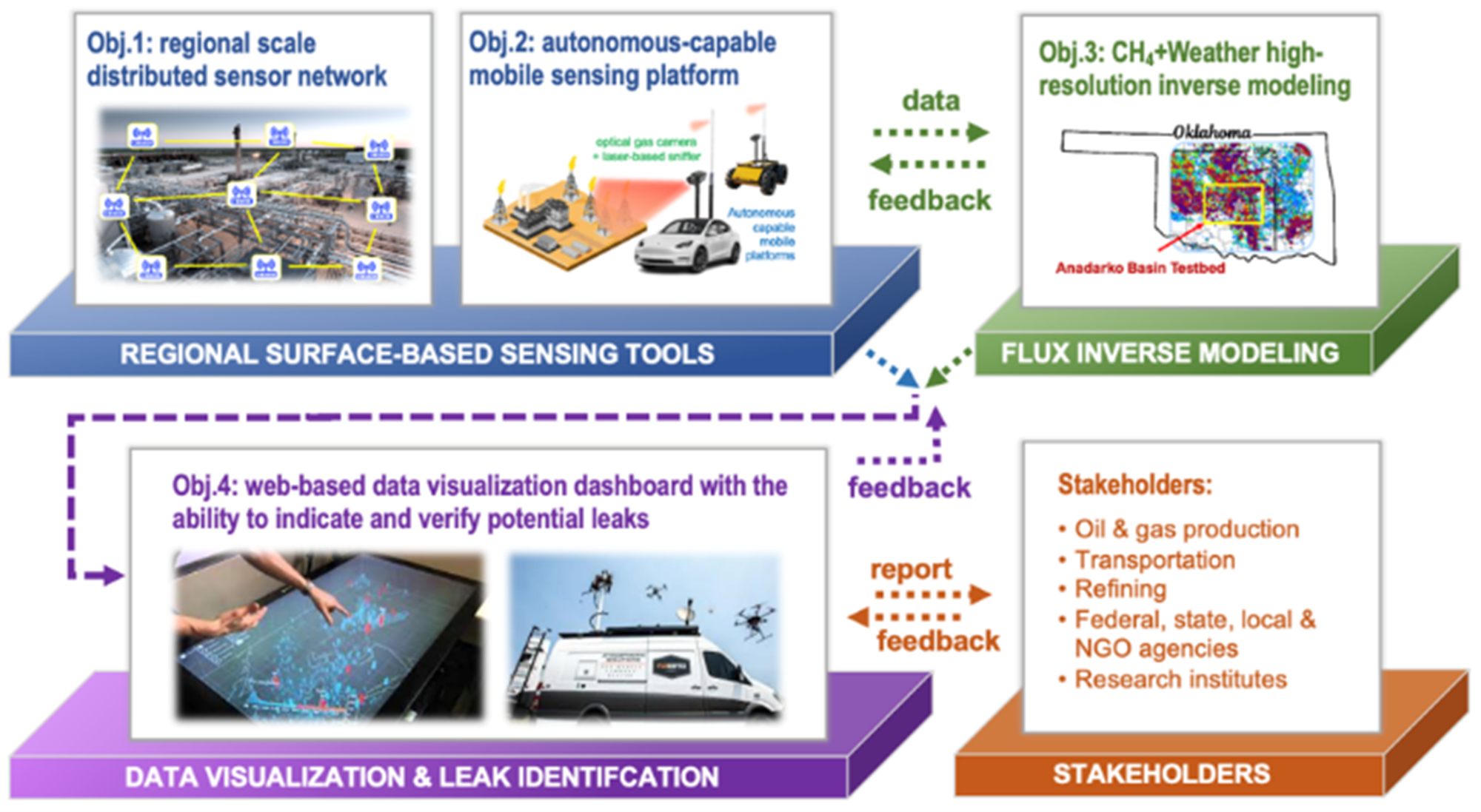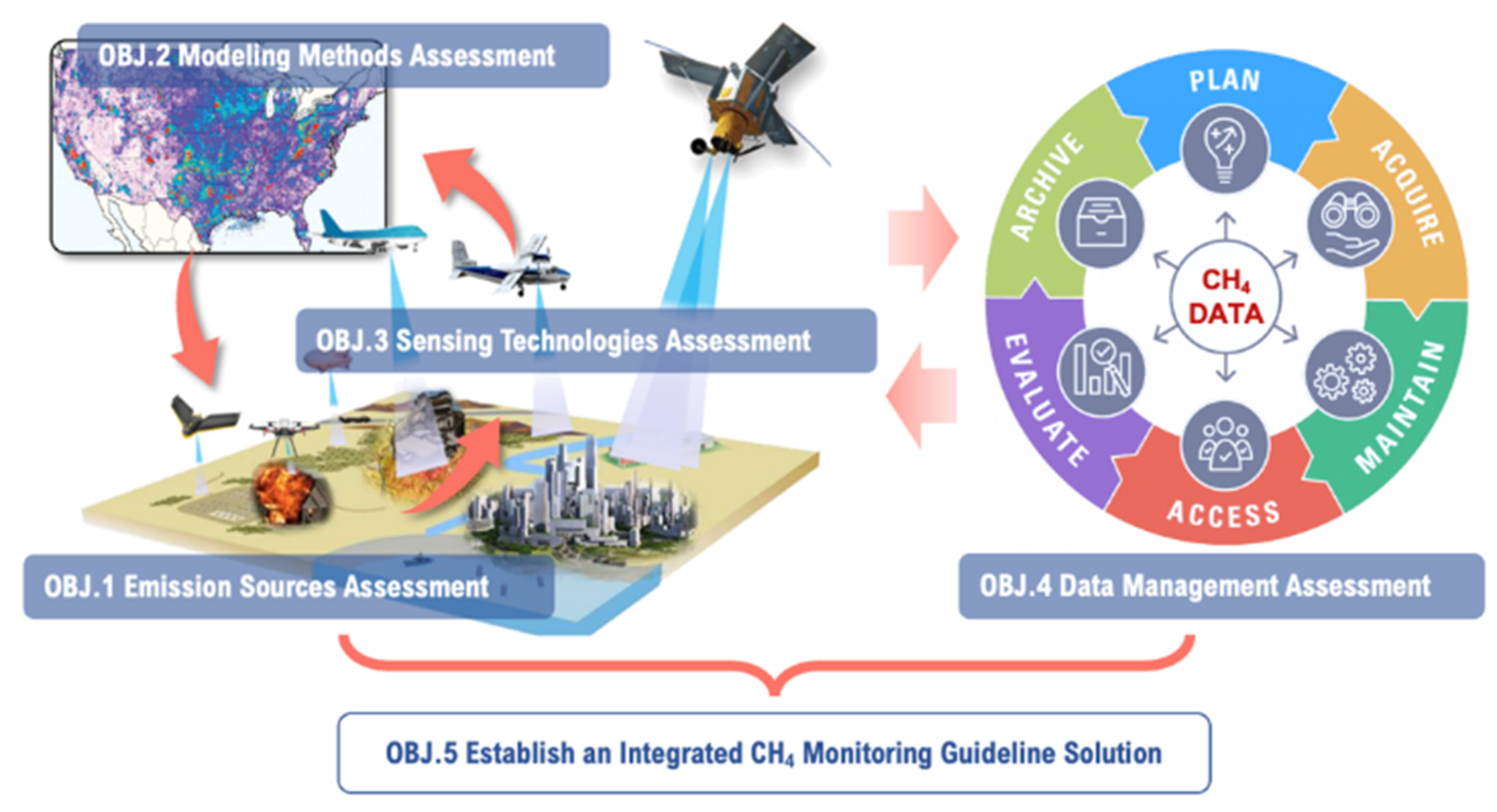Detecting Methane Emissions
Binbin Weng, Ph.D., assistant professor in the School of Electrical and Computer Engineering, Gallogly College of Engineering at OU, is the lead principal investigator of the project “A Regional-Scale Showcase of Hybrid Methane Sensing Networks in the Anadarko Basin.” The project is funded by an expected $8.49 million over five years. Project partners include Flogistix, Devon Energy, Coterra Energy, EnLink Midstream, Cimarron Electrics, AT&T, and SenseAir, as well as collaborators at Pennsylvania State University and the University of Science and Arts of Oklahoma.
In addition to the external industrial and academic partners, Weng’s research team is collaborating with multiple OU centers and institutes to develop a scalable, integrated surface sensor network system that measures and monitors methane concentration and leak plumes in the Anadarko Basin – one of the largest domestic sources of natural gas in the U.S.
The pilot study will focus on a large oil and gas production area over a tract of land approximately 10 miles by 10 miles west of Oklahoma City, which contains more than 100 active upstream drilling wells and some midstream processing facilities.
“We have a strong multidisciplinary team to build an integrated sensor-modeling - visualization platform for real-time methane detection and decision-making system,” Weng said.
The results of this study aim to help companies detect any accidental methane emissions and comply with carbon mitigation regulations. Using this scalable sensing platform, the first-stage target is to narrow the detection resolution down to 100 meters, and through further testing and refinement, the researchers believe this system could achieve detection at the meter scale – specific enough for oil and gas employees to find and mitigate methane leaks.
“The automation concept here is to minimize the involvement of human beings as much as possible. You cannot send people out over a large regional scale or tens of miles every day and every moment. It’s practically impossible. So, we developed an approach that I would say is one of its kind,” Weng said.
“Eventually, we want this to have a very easy-to-read interface, so oil and gas employees will quickly know what action to take. OU’s Data Institute for Societal Challenges will take our technology and create software that is easy to access, navigate and give companies a good action plan,” he added.



